Home>Interior Design>Closet Organization Ideas: 21 Tricks To Keep Clothes Neat
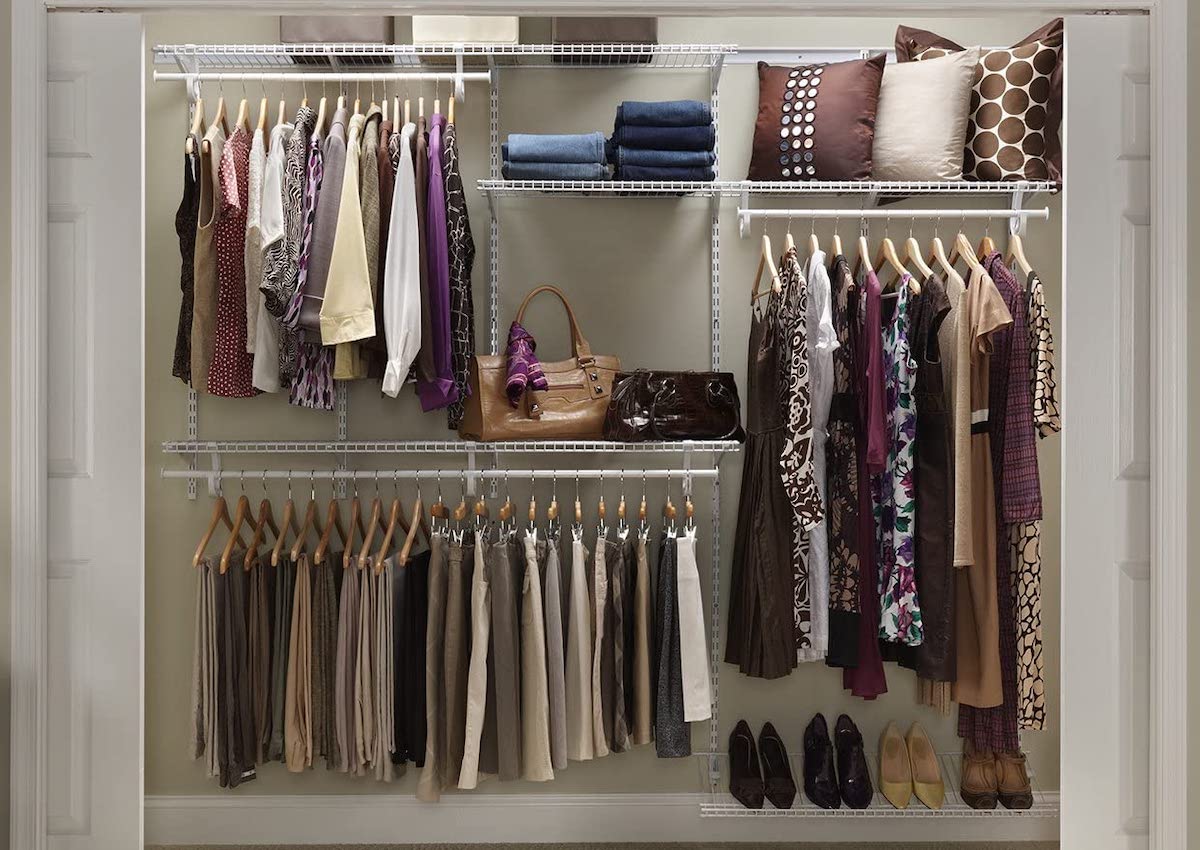

Interior Design
Closet Organization Ideas: 21 Tricks To Keep Clothes Neat
Modified: October 20, 2024
Discover 21 expert interior design tricks for keeping your clothes neat and organized with these closet organization ideas.
(Many of the links in this article redirect to a specific reviewed product. Your purchase of these products through affiliate links helps to generate commission for Storables.com, at no extra cost. Learn more)
Introduction
Having a well-organized and clutter-free closet is essential for creating a functional and visually appealing space. A neat and tidy closet not only makes it easier to find and access your clothes, but it also helps to streamline your daily routine and reduce stress. If you find yourself constantly rummaging through piles of clothes or struggling to make space for new items, it’s time to implement some effective closet organization ideas.
In this article, we will explore 21 practical and creative tricks to keep your clothes and accessories in order. From decluttering and sorting to maximizing storage space, these tips will help you transform your chaotic closet into a well-structured and visually pleasing haven. Get ready to rediscover the joy of opening your closet doors and effortlessly finding the perfect outfit for any occasion.
So, roll up your sleeves and let’s get started on the journey to a beautifully organized closet!
Key Takeaways:
- Transform your cluttered closet into a well-organized haven by implementing various techniques such as decluttering, utilizing storage solutions, and seeking inspiration from closet organization blogs and videos.
- Maximize space and keep your belongings easily accessible by incorporating seasonal clothing rotation, utilizing non-slip hangers, and creating dedicated areas for accessories. Regular maintenance and adjustments are key to maintaining an organized closet system.
Decluttering your closet
The first step towards achieving a well-organized closet is to declutter and eliminate unnecessary items. Begin by taking everything out of your closet and systematically go through each item. Consider whether it still fits, if you’ve worn it in the past year, and if it’s in good condition. Be ruthless in your decision-making process and don’t hold onto items out of sentimentality or the hope that you’ll wear them someday.
Separate your clothes into different piles: keep, donate/sell, and toss. Only keep the items that you genuinely love, wear frequently, and are in good condition. For those items that no longer serve you, consider donating them to a charity or selling them online. This process of decluttering will not only create more space in your closet, but it will also give you a sense of accomplishment and clarity.
Once you have decluttered your clothes, it’s time to tackle accessories, such as belts, scarves, and hats. Follow the same decluttering process, getting rid of items that you no longer wear or that are in poor condition. Remember, the goal is to keep only the pieces that bring you joy and enhance your personal style.
When organizing your closet, it’s crucial to evaluate your storage space and the specific needs of your wardrobe. Assess whether your current closet layout is sufficient or if you need to invest in additional storage solutions. This will help you determine the most effective organization methods for your unique situation.
By decluttering your closet, you’ll not only create a more visually appealing space but also make it easier to find and access your clothes. Plus, you’ll have a clearer understanding of what you already own, which can minimize unnecessary purchases in the future.
Sorting and categorizing your clothes
Once you have decluttered your closet, it’s time to sort and categorize your clothes. This step is essential for creating a systematic and easily accessible wardrobe. Start by grouping similar items together, such as tops, bottoms, dresses, and outerwear.
Within each category, further organize your clothes based on their type, such as t-shirts, blouses, or sweaters. You can also categorize them by occasion, such as formal or casual wear, to make it easier to find the right outfit for any event.
Consider utilizing dividers or separate sections within your closet to visually separate different categories or types of clothing. This can be done using hanging organizers, drawer dividers, or shelf dividers. By creating designated spaces for each item, you’ll be able to maintain the organization of your closet even after daily use.
Sorting and categorizing your clothes not only makes it easier to find specific items but also helps you identify any gaps in your wardrobe. By visually seeing all your clothes in an organized manner, you can determine which areas may need additions or replacements.
Additionally, consider organizing your clothes by color or style. This not only adds a visually pleasing element to your closet but also allows you to easily coordinate your outfits. Invest in matching hangers or use different-colored hangers to further enhance the aesthetic appeal and organization of your clothes.
Remember to regularly reassess and update your sorting and categorizing system as your wardrobe evolves. Your style and preferences may change over time, and by adapting your organization methods, you can ensure your closet remains efficient and functional.
Sorting and categorizing your clothes is an important step in maintaining an organized closet. It allows you to find items quickly and easily, ensures your wardrobe is visually appealing, and helps you identify any gaps in your clothing collection. With a well-structured closet, getting dressed in the morning becomes a breeze.
Maximizing vertical space with hanging organizers
One of the most effective ways to optimize your closet space is by utilizing hanging organizers. These versatile storage solutions make use of the vertical space in your closet, allowing you to store a variety of items.
Hanging organizers come in different styles, such as hanging shelves or compartments. They can be hung from a clothing rod or attached to the back of your closet door. These organizers are perfect for storing folded clothes, accessories, and even shoes.
When using hanging shelves, consider organizing your clothes by category or type. Use separate shelves for t-shirts, sweaters, or jeans. This not only keeps your clothes neatly organized but also makes them easily visible and accessible.
For smaller items like socks, underwear, or scarves, hanging organizers with compartments are ideal. These compartments provide individual spaces for each item, making it easier to find what you need without rummaging through a messy drawer.
Maximizing vertical space with hanging organizers is especially useful for small closets or limited storage areas. By utilizing the height of your closet, you can create additional storage space without taking up valuable floor space.
Make sure to choose hanging organizers made of durable materials that can support the weight of your items. Reinforced stitching and sturdy hooks or straps are essential for long-lasting organization.
When arranging your hanging organizers, consider grouping similar items together. For example, dedicate one organizer for workout clothes, another for sleepwear, and a separate one for accessories.
Remember to periodically assess your hanging organizers and declutter any items that you no longer need or wear. This will ensure that your vertical space remains well-organized and efficient.
Hanging organizers are a fantastic solution for maximizing vertical space in your closet. Take advantage of these practical storage solutions to keep your clothes and accessories neatly organized and easily accessible, while also making the most of your closet’s available space.
Utilizing drawer dividers for smaller items
When it comes to organizing smaller items such as socks, underwear, and accessories, drawer dividers are your best friend. These handy tools help create separate compartments within your drawers, ensuring that everything stays neat and easily accessible.
Start by emptying out your drawers and sorting through your smaller items. Discard any items that are worn out, damaged, or no longer serve a purpose. This will help declutter your collection and make room for the items you truly need and love.
Next, measure the width and depth of your drawers to determine the size of the dividers you’ll need. There are various types of dividers available, including adjustable ones, which can be customized to fit any drawer size.
Place the dividers in your drawer, creating individual compartments for each category or type of item. Consider separating your socks by color or style, creating sections for different types of underwear, and allocating spaces for accessories like belts, scarves, or ties.
Drawer dividers not only keep your items organized but also prevent them from becoming tangled or getting lost in the depths of your drawer. With dividers in place, you’ll be able to quickly find the specific item you’re looking for, saving you time and minimizing frustration.
Consider using clear or transparent dividers, as they allow you to easily see what’s inside each section without having to dig through the entire drawer. This visual accessibility makes it easier to choose and coordinate your outfits.
Drawer dividers are also versatile and can be used in various places around the house. For example, you can use them to organize your desk drawers, bathroom cabinets, or even kitchen utensils. They are a simple yet effective solution for creating order and maximizing space in any setting.
Remember to periodically reassess and declutter your drawer dividers. As with any organization system, it’s crucial to regularly evaluate whether you actually use and need the items you’re storing. Discard or donate any items that no longer serve you and make adjustments to your dividers as your needs change over time.
By utilizing drawer dividers, you can transform your chaotic drawers into perfectly organized spaces, ensuring that your smaller items are easy to find and neatly stored. Say goodbye to rummaging around for a missing sock or tangled accessories and enjoy the efficiency and order that drawer dividers bring to your closet.
Using shelf dividers for folded garments
When it comes to organizing folded garments on your closet shelves, shelf dividers are a game-changer. These simple tools help keep your stacks of clothes upright, preventing them from toppling over and creating a mess.
Start by evaluating the available space on your closet shelves and determine the height and width of the dividers you’ll need. There are various types of shelf dividers available, such as adjustable ones that can fit different shelf sizes.
Place the dividers at intervals along the shelf, creating separate sections for different categories of clothing. This ensures that your folded garments, such as sweaters, t-shirts, or jeans, maintain their neat and organized appearance.
Not only do shelf dividers keep your clothes upright, but they also make it easy to locate and access specific garments without disrupting the entire stack. You can quickly grab the item you need without causing a domino effect and having to refold the entire stack.
Shelf dividers work extremely well for organizing items of different sizes or styles together. For example, you can use dividers to create separate sections for different color t-shirts, allowing you to easily find the right one for your outfit.
Consider using clear or transparent dividers, as they allow you to easily see the contents of each section. This visual accessibility makes it simple to locate the specific item you’re looking for, whether it’s a specific color or style.
In addition to organizing folded garments, you can also use shelf dividers for other items, such as handbags, towels, or linens. They provide stability and structure, ensuring that everything stays in its designated place.
Like with any organization system, it’s important to periodically reassess and declutter your folded garments. Remove any items that you no longer wear or that are in poor condition. This will keep your shelves tidy and make room for new additions to your wardrobe.
With the help of shelf dividers, you can transform your closet shelves into orderly, neat sections. Say goodbye to messy stacks of clothes and enjoy the ease and efficiency that shelf dividers bring to your closet organization.
Incorporating storage bins or baskets for accessories
When it comes to organizing accessories such as belts, scarves, and hats, storage bins or baskets are a fantastic solution. These versatile containers provide a designated space for your accessories, keeping them separate from your clothes and easily accessible.
Start by sorting through your accessory collection and decluttering any items that you no longer wear or are in poor condition. This will help streamline your collection and ensure that you only keep the accessories that you truly love and use.
Next, choose storage bins or baskets that are appropriate for the size and quantity of your accessories. Opt for containers with dividers or compartments to keep different types of accessories separate and prevent them from becoming tangled or damaged.
Determine the ideal location for your accessory storage bins or baskets. Consider placing them on a shelf, in a drawer, or even on top of your closet organizer. Choose a spot that is easily accessible and suits the layout of your closet.
When organizing your accessories within the containers, group similar items together. For example, keep belts in one section, scarves in another, and hats in a separate section. This makes it easier to find and select the perfect accessory for your outfit.
Consider using bins or baskets that are clear or have a transparent cover. This allows you to easily see the contents of each container without having to open them. Having a clear view of your accessories helps save time and ensures that you can quickly find what you’re looking for.
Labeling your storage bins or baskets further enhances organization and makes it even easier to locate specific accessories. Simply use adhesive labels or even a label maker to mark each container with its contents. This way, you can effortlessly identify the accessory you need without having to search through multiple bins.
Periodically reassess and declutter your accessory collection to ensure that you only keep the items you truly wear and enjoy. Remove any accessories that no longer serve you or are no longer your style. This will help maintain an organized and clutter-free space.
By incorporating storage bins or baskets for your accessories, you can keep your accessories in order, easily accessible, and prevent them from getting tangled or damaged. Enjoy the ease and efficiency of having a designated space for your accessories within your organized closet.
Installing a shoe rack or utilizing shoe organizers
Having a proper storage solution for your shoes is crucial for maintaining an organized closet. Installing a shoe rack or utilizing shoe organizers can help keep your footwear in good condition, easily accessible, and free from clutter.
Start by evaluating the available space in your closet and determining the best location for your shoe storage. Consider installing a shoe rack on the floor or utilizing hanging shoe organizers on the back of your closet door.
Choose a shoe rack or organizer that suits your needs and the number of shoes you have. There are various options available, such as wooden shoe racks, plastic shoe cubbies, or fabric hanging shoe organizers with pockets.
When arranging your shoes, first sort them by type or style. Group together sneakers, heels, flats, and boots. This not only helps maintain order but also makes it easier to find the specific pair of shoes you’re looking for.
Consider organizing your shoes in a visible and accessible manner. For example, arrange them with the toes facing outward or put them in clear shoe bins. This allows you to quickly browse through your collection and easily select the shoes you want to wear.
For smaller shoes or delicate heels, consider utilizing specially designed shoe boxes or protective shoe bags to keep them safe from dust and damage. Label these containers for easy identification.
If you have limited floor space, utilize vertical shoe storage solutions such as over-the-door shoe organizers or shoe hanging racks. These options help maximize space and keep your shoes off the floor.
Regularly declutter and assess your shoe collection. Discard or donate any shoes that are worn out, no longer fit, or are not your style. This will prevent your shoe rack from becoming overcrowded and make room for new additions.
Consider using shoe racks or organizers not only in your closet but also in other areas of your home. They can be useful in entryways, mudrooms, or even under the bed.
With a dedicated storage solution for your shoes, you can ensure that they are neatly organized, easily accessible, and well-maintained. Say goodbye to searching for missing shoes or dealing with a messy pile, and enjoy the efficiency and tidiness that come with a proper shoe storage system.
Utilizing door-mounted organizers for additional storage
When it comes to maximizing storage space in your closet, don’t overlook the potential of the back of your closet door. By utilizing door-mounted organizers, you can create additional storage space for a variety of items, keeping them easily accessible and freeing up valuable shelf or floor space.
Start by assessing the layout and dimensions of your closet door. Take measurements to ensure that any door-mounted organizer you choose will fit properly and not interfere with the opening and closing of the door.
There are various types of door-mounted organizers available, including pockets, hooks, or even racks. Consider the specific needs of your closet and the items you wish to store, then choose an organizer that suits those requirements.
Door-mounted organizers are versatile and can be used for a wide range of items. Utilize them to store accessories such as scarves, belts, or hats. Hang small purses, handbags, or backpacks. You can even use them to store shoes, jewelry, or beauty products.
When arranging your items in the door-mounted organizer, group similar items together to keep them organized and easily accessible. Consider designating specific pockets or hooks for different categories of items, or even label the sections for further organization.
Make use of clear or transparent pockets or compartments, as this allows you to easily see the contents of each section without having to open them. This visibility helps save time and ensures that you quickly find what you’re looking for.
If you have multiple people sharing a closet, allocate dedicated sections of the door-mounted organizer for each person. This helps maintain individual organization and makes it easier for everyone to find their belongings.
Regularly assess and declutter the items stored in the door-mounted organizer. Remove any items that you no longer use or need. This will keep the organizer from becoming overcrowded and ensure that you’re making the most of the available space.
Door-mounted organizers are not limited to just your closet. Consider utilizing them on other doors throughout your home, such as in your pantry, bathroom, or laundry room. They provide a convenient storage solution and help keep your items easily accessible and within reach.
With the help of door-mounted organizers, you can efficiently utilize the often-overlooked space on the back of your closet door. Say goodbye to cluttered shelves and floors, and enjoy the added storage and organization that door-mounted organizers bring to your closet.
Read more: How To Organize Clothing In Closet
Implementing a seasonal clothing rotation system
One effective way to optimize your closet space and keep it organized is by implementing a seasonal clothing rotation system. This system allows you to store out-of-season clothing while keeping your current season’s wardrobe easily accessible.
Start by determining which items are appropriate for the current season. With each change of season, assess your wardrobe and separate clothing, shoes, and accessories that are suitable for the upcoming months. These are the items that will remain in your closet for easy access during the current season.
Next, identify the items that are no longer appropriate for the current season. Fold or hang these items neatly and store them in labeled storage bins or vacuum-sealed bags. Find a designated storage area, such as under your bed or in a storage closet, to keep these out-of-season items until their time comes around again.
When rotating your clothing for the new season, take the opportunity to revisit each item. Assess if it still fits, if you still love it, and if it’s in good condition. This is the perfect time to declutter and donate or sell any items that no longer serve you or your style.
Label the storage bins or bags with the contents and season so that you can easily locate specific items when the time comes to rotate your wardrobe again.
Implementing a seasonal clothing rotation system helps maximize closet space by reducing clutter and ensuring that only the appropriate items are easily accessible. It also provides an opportunity to refresh your wardrobe each season, allowing you to curate outfits with ease and efficiency.
Additionally, this rotation system gives you a chance to evaluate any gaps in your wardrobe and make note of items you may need to purchase for the upcoming season.
Whether you’re swapping out light summer dresses for cozy sweaters or stashing away bulky winter coats for lightweight jackets, a seasonal clothing rotation system will help keep your closet organized, efficient, and ready for each new season.
Utilizing cascading hangers to save space
When it comes to maximizing the vertical space in your closet, cascading hangers are an excellent solution. These specialized hangers allow you to hang multiple garments vertically, saving space and keeping your clothes wrinkle-free.
Start by selecting cascading hangers that suit your closet’s design and your clothing needs. There are different types available, including ones with hooks that hang on a closet rod and others with clips or slots for securing garments.
Cascading hangers are perfect for lightweight fabrics, such as blouses, tank tops, and skirts. They work particularly well for items with thin straps or delicate materials that may easily slip off traditional hangers.
To use cascading hangers, select a group of garments that you want to hang together. Slip the top garment’s hanger through the hook or loop of the cascading hanger, and then hang the subsequent garments on the lower hooks or slots of the cascading hanger.
This stacking effect allows you to hang multiple pieces of clothing vertically, taking up less horizontal space in your closet. As a result, you can fit more garments in a smaller area.
Not only do cascading hangers save space, but they also help keep your clothes organized and reduce the likelihood of creases or wrinkles. Your clothes will hang more uniformly and be readily accessible when you need them.
Consider using cascading hangers for specific categories of clothing, such as blouses or skirts, to streamline your wardrobe organization. This method makes it easier to find and select the item you want without sifting through a jumble of hangers.
When maintaining your clothing collection on cascading hangers, periodically reassess and declutter your wardrobe. Remove any items you no longer wear or that are in poor condition. This keeps the hangers from becoming overcrowded and ensures that you’re making the most of the available space.
Cascading hangers are a simple yet effective storage solution for maximizing vertical space in your closet. By utilizing them, you’ll have more room for your clothes while keeping them neatly organized, easily accessible, and free from wrinkles. Enjoy the efficiency and tidiness that cascading hangers bring to your closet organization.
Organizing clothes by color or style for easy selection
Organizing your clothes by color or style is a visually appealing and practical method of keeping your closet neat and making it easier to select the perfect outfit. This organization strategy allows you to quickly and effortlessly find the clothing item you need, saving you time and eliminating the frustration of rummaging through a messy closet.
Start by sorting your clothes into categories based on color or style. You can choose to organize them by specific colors like red, blue, or black, or group them into broader categories like neutrals, pastels, or bold colors. Alternatively, you can organize your clothes by style, such as casual, formal, or workwear.
Once you have grouped your clothes into categories, arrange them in your closet accordingly. Start with one color or style category and hang those garments together. You can use this approach for both hanging clothes and folded items on shelves.
When arranging your clothes by color, consider creating a gradient effect, starting with lighter shades and moving towards darker ones. This creates a visually pleasing transition and makes it easier to find specific colors.
If organizing by style, create designated sections in your closet for each category. For example, have a section for casual tops, work blouses, or formal dresses. Within each section, you can further arrange the clothes by color or other subcategories.
Labeling or tagging the sections in your closet can be beneficial in maintaining the organization of your clothes. This makes it easier to identify and locate specific pieces, especially if you’re in a hurry or have a large wardrobe.
Organizing by color or style not only makes your closet aesthetically pleasing, but it also allows for easier coordination of outfits. When you can clearly see your clothes arranged by color, you can easily visualize different combinations and create a cohesive look.
Periodically assess your wardrobe organization and make adjustments as necessary. As new items are added or as your style evolves, you may need to rearrange or modify your color or style categories. Regularly declutter and remove any clothes that you no longer wear or that are in poor condition.
By organizing your clothes by color or style, you’ll transform your closet into a visually appealing and functional space. Finding the perfect outfit will become a breeze, leading to less stress and more confidence in your daily wardrobe choices.
Use slim velvet hangers to maximize closet space and prevent clothes from slipping off. Group similar items together and use shelf dividers to keep stacks of clothes neat and organized.
Folding and storing bulky items separately
When it comes to organizing your closet, bulky items such as sweaters, hoodies, or thick winter coats can take up a lot of space. To optimize storage and maintain a neat and organized closet, it’s essential to fold and store these items separately from your regular clothing.
Start by taking out your bulky items from the closet and evaluate their condition. If any of them are in need of repair or no longer fit properly, set them aside for donation or discard them.
Next, fold your bulky items in a way that maximizes space and minimizes wrinkles. Lay them flat on a clean surface and smooth out any creases. Fold them in half lengthwise, and then fold them in thirds from the bottom up.
When storing bulky items, consider using dedicated storage containers or vacuum-sealed bags. These options help compress the items, reducing the amount of space they take up and protecting them from dust or insects.
Label your storage containers or bags with the items they contain and consider adding a small packet of moisture absorber to prevent any potential moisture buildup.
Identify a separate storage area for your bulky items, such as under the bed, a storage closet, or the top shelf of your closet. This dedicated space will ensure that your regular clothing remains easily accessible and uncluttered.
Keep in mind that bulky items should be stored in a cool, dry, and well-ventilated area to prevent any potential damage such as mold or mildew. Avoid storing them in direct sunlight or damp environments.
Periodically check on your stored items and assess if any need to be replaced or if you can donate them to make room for new additions. It’s also a good opportunity to inspect their condition and make any necessary repairs or cleaning before the next season.
By folding and storing bulky items separately, you’ll free up valuable space in your closet and maintain a more organized and visually appealing wardrobe. Separating these items ensures that your regular clothing is easily accessible, while your bulky items remain well-preserved and ready for when the weather calls for them.
Using clear storage containers for visibility
When it comes to organizing your closet, utilizing clear storage containers can be a game-changer. These transparent containers allow you to easily see the contents inside, making it simple to locate specific items and keeping your storage space neat and organized.
Start by assessing the types of items you want to store in clear containers. This can include accessories, shoes, handbags, or even folded clothing. By grouping similar items together, you can better organize your storage containers.
Choose clear storage containers made of durable materials that will protect your items from dust, moisture, and potential damage. Opt for containers with secure lids or closures to keep your items safe and secure.
When storing items in the containers, arrange them in a logical and organized manner. Fold and stack clothing neatly, place shoes or accessories together, and utilize dividers or compartments to separate and organize smaller items.
Label the containers if necessary, especially if you have multiple containers with similar items. This will help you quickly locate what you need without having to open each container.
Clear storage containers are not only useful for organizing your closet but also for other areas of your home. Utilize them in your pantry, bathroom, or office to keep items visible and easily accessible.
One of the many benefits of using clear storage containers is their versatility. They come in various shapes and sizes, allowing you to customize your storage solutions according to your specific needs.
Clear containers also make it easier to assess and declutter your items. Regularly evaluate the contents of each container and remove any items that you no longer need, use, or love. This keeps your storage space clutter-free and allows you to make the most of the available space.
Another advantage of using clear storage containers is that they help protect your items while still displaying them. This is particularly beneficial for preserving delicate or sentimental pieces, as you can see and appreciate them without exposing them to unnecessary handling or potential damage.
By using clear storage containers, you’ll transform your closet organization. Enjoy the convenience of easily locating your items, the efficient use of space, and the ability to keep your belongings neatly stored and protected. Say goodbye to rummaging through opaque containers and hello to the clarity and organization that clear storage containers bring.
Utilizing hooks for hanging hats, scarves, or belts
When it comes to organizing hats, scarves, or belts in your closet, utilizing hooks is an efficient and practical solution. Hooks provide a dedicated space for these accessories, keeping them easily accessible, visible, and free from wrinkles or tangles.
Start by assessing the available space in your closet for installing hooks. Determine the ideal location, such as the back of the closet door, a wall, or even on a hanging rod.
Choose hooks that are suitable for your accessories. You can opt for hooks with a single prong or multiple prongs, depending on the number of items you need to hang.
You can install hooks directly on the wall or use adhesive hooks if you prefer not to make any permanent changes to your closet. Just ensure that the hooks are securely attached and can bear the weight of your accessories.
To maximize the use of hooks, group similar items together. Hang hats on one set of hooks, scarves on another, and belts on a separate set. This keeps your accessories organized and allows for easy selection when putting together an outfit.
When hanging scarves, you can loop them through the hook or fold them and drape them over the hook. For belts, hang each belt on its own hook to prevent tangles and make it easier to see and access each belt.
Consider arranging your accessories by color or style on the hooks. This not only adds a visually pleasing element to your closet but also makes it effortless to coordinate your outfits.
If you have limited space for hanging accessories, consider using multiple hooks or a row of hooks to make the most of the available area. You can also utilize the sides of shelves or the inside of your closet door to install additional hooks.
Regularly reassess and declutter your accessories, removing any items that you no longer wear or that are in poor condition. This will help keep your hooks from becoming overcrowded and ensure that you’re utilizing the hooks for items you truly love and use.
By utilizing hooks for hanging hats, scarves, and belts, you’ll keep these accessories organized, visible, and easily accessible. Enjoy the convenience and efficiency of having a dedicated space for these items, making putting together your outfits a breeze.
Creating a designated area for accessories and jewelry
When it comes to organizing accessories and jewelry, creating a designated area is key to maintaining an efficient and clutter-free closet. By dedicating a space specifically for these items, you’ll be able to find and display your accessories easily while keeping them protected and untangled.
Start by identifying a specific location in your closet where you can create this designated area. It can be a section of a shelf, a drawer, or even a small countertop or table if space allows.
Consider investing in organizers or storage solutions specifically designed for accessories and jewelry. There are various options available, such as jewelry boxes, trays, dividers, hooks, or even wall-mounted racks for hanging necklaces.
Separate your accessories by type and assign them specific sections within the designated area. For example, create sections or compartments for necklaces, bracelets, earrings, and rings. This ensures that each category has its designated space and prevents them from getting tangled or lost.
Use dividers or small containers within the designated area to keep your accessories separated and organized. This will help you quickly find and select the item you want to wear without having to sift through a jumble of accessories.
To prevent necklaces from tangling, utilize hooks or a jewelry rack to hang them individually. This not only keeps them untangled but also allows you to easily see and select the necklace you want to wear.
For smaller items like earrings or rings, consider utilizing a jewelry box or tray with compartments. This provides a safe and organized space to store your precious pieces while keeping them easily visible.
It’s important to regularly declutter your accessories and jewelry. Remove any items that you no longer wear or that are in poor condition. This will help maintain an organized and clutter-free space, ensuring that you only keep the items you truly love and enjoy wearing.
Consider labeling or categorizing different sections within the designated area if necessary. This can be particularly helpful if you have a large collection of accessories or if you share the space with someone else.
In addition to the designated area within your closet, you can also create a small vanity or dressing table where you can display your favorite accessories and easily access them when getting ready. Arrange them in a visually appealing manner, grouping similar items together or displaying them by color.
By creating a designated area for accessories and jewelry, you’ll efficiently organize and display your collection, making it easy to find and select the perfect pieces for any outfit. Enjoy the convenience and visual appeal of having a space dedicated to your accessories, adding a touch of elegance and functionality to your closet.
Utilizing a clothing rolling rack for additional hanging space
When it comes to increasing the hanging space in your closet, a clothing rolling rack is a fantastic solution. This versatile and portable rack provides additional space for hanging clothes, making it perfect for storing overflow items, planning outfits, or creating a designated area for specific purposes.
Start by choosing a clothing rolling rack that suits your needs and fits within the available space in your closet or room. Consider factors such as the rack’s height, width, durability, and weight capacity.
Once you have your rolling rack, determine the best location for it within your closet or room. You can place it alongside your existing hanging rod, against a wall, or even in a separate area if space allows.
Use the rolling rack to hang clothes that are currently in season or that you frequently wear. This helps keep your main hanging rod less crowded and makes it easier to access your everyday clothing.
Consider using the rolling rack as a dedicated spot for planning outfits. Hang together the clothing items you’ll be wearing for a specific occasion or create daily outfits in advance. This saves time in the morning and keeps your closet organized.
If you have limited closet space, a clothing rolling rack can provide a temporary solution for storing extra items. Hang clothes that are out of season or special occasion garments, keeping them separate from your everyday wear but still easily accessible.
Utilize the rolling rack for a specific purpose, such as displaying your favorite pieces or creating a mini capsule wardrobe. This allows you to showcase your personal style or streamline your clothing options for a particular season or event.
In addition to clothing, the rolling rack can be used for hanging accessories such as scarves, bags, or belts. Attach hooks or small baskets to the rack to make use of the vertical space and keep your accessories organized.
Periodically reassess the items on the rolling rack and rotate them based on your needs. Remove clothing that is no longer in season or that you no longer wear, making space for new additions or different items as your style evolves.
Remember to regularly maintain and clean your clothing rolling rack to ensure its longevity and keep your clothes in good condition. Wipe down the rack with a damp cloth and check for any signs of wear or instability.
A clothing rolling rack is a versatile and practical addition to your closet organization. It provides additional hanging space, helps with outfit planning, and adds flexibility to your wardrobe. Enjoy the convenience and flexibility of having a portable hanging rack within your closet or room.
Utilizing non-slip hangers to prevent garments from slipping
When it comes to organizing your clothes in the closet, utilizing non-slip hangers is a simple yet effective solution to prevent garments from slipping off and ending up in a disheveled pile on the floor. These specially designed hangers provide grip and stability, keeping your clothes neatly hung and ready to wear.
Start by assessing your current hangers and identifying which ones need to be replaced with non-slip hangers. Look for hangers with rubberized or velvet coating, as these materials provide a non-slip surface that helps hold clothing in place.
Replace the regular hangers in your closet with non-slip hangers for all types of clothing, from tops and dresses to pants and skirts. Non-slip hangers are particularly useful for silky or delicate fabrics that tend to slip off traditional hangers.
Another option is to use non-slip attachments or grips that can be added to regular hangers. These attachments provide grip and prevent clothes from sliding off, making them a cost-effective alternative to buying a whole new set of hangers.
When hanging clothes on non-slip hangers, pay attention to the fabric and weight of the garments. Avoid overcrowding the hangers or hanging heavy items on delicate hangers, as this can cause strain and reduce the effectiveness of the non-slip feature.
Non-slip hangers are also beneficial for hanging pants or skirts. Look for hangers with adjustable clips or clamp features that securely hold bottoms in place without causing damage or leaving creases.
Regularly inspect your non-slip hangers for any signs of wear or damage. Replace any hangers that are no longer providing a strong grip or have become weakened over time.
To prevent clothes from slipping off hangers, it’s important to hang each garment properly. Smooth out any wrinkles or creases before hanging, and ensure that the garment is securely placed on the hanger.
Non-slip hangers not only keep your clothes organized but also help maintain their shape and condition. By preventing garments from slipping off, these hangers reduce the chances of clothes getting wrinkled, stretched, or damaged.
By opting for non-slip hangers in your closet, you’ll enjoy the convenience and peace of mind knowing that your clothes stay in place, ready to wear whenever you need them. Say goodbye to clothes constantly slipping off hangers and hello to a closet that’s organized and free from wardrobe mishaps.
Incorporating labels or tags for easy identification
When it comes to organizing your closet, incorporating labels or tags is a simple and effective strategy for easy identification of your belongings. By labeling or tagging your items, you’ll be able to quickly locate specific garments or categories, making your closet organization more efficient and streamlined.
Start by assessing the different areas or sections of your closet that would benefit from labels or tags. This can include clothing categories, storage bins, shelves, or drawers.
Choose labels or tags that are durable and easily visible. You can opt for adhesive labels, hang tags, or even reusable tags with strings. Consider using a label maker or handwriting labels for a personalized touch.
Categorize your clothing items and assign labels accordingly. This can be done by type (shirts, pants, dresses), color, or even outfit combinations. Hang tags or labels on the hangers or at the front of shelves to clearly mark each section.
For storage bins or containers, attach labels or tags to the front or top of each container. This helps you quickly identify what’s inside without having to rummage through each one.
When labeling or tagging garments, consider adding additional information such as size, season, or occasions for easy reference. This can be particularly helpful when you’re looking for a specific item or planning outfits for different events.
Incorporate labels or tags that are easily adjustable or interchangeable. This allows you to update or change labels as your wardrobe evolves or as you reorganize your closet without having to start from scratch each time.
For accessory storage, such as boxes or trays, use tags to identify the contents within. This is especially useful for organizing items like scarves, belts, or jewelry, making it easy to find the perfect accessory for your outfit.
Keep in mind that labels or tags should complement your overall aesthetic and enhance the visual appeal of your closet. Choose designs and fonts that align with your personal style.
Regularly review and update your labels or tags as needed. When you add new items to your wardrobe or rearrange your closet, make sure the labels or tags accurately reflect the current organization.
By incorporating labels or tags in your closet organization, you’ll create a clear and efficient system that allows you to easily identify and locate your belongings. Enjoy the convenience and visual clarity that labels or tags bring to your closet, making your daily routine more streamlined and enjoyable.
Utilizing under-bed storage for off-season clothing
When it comes to maximizing storage space in your bedroom, under-bed storage is a valuable and often underutilized option. This space is perfect for storing off-season clothing, allowing you to free up valuable closet space and keep your wardrobe organized and easily accessible.
Start by decluttering your closet and identifying the seasonal clothing that you won’t be wearing in the current season. This includes bulky winter coats in the summer or lightweight summer dresses in the winter.
Sort these off-season items into categories or types, such as sweaters, heavy jackets, or summer shorts. This helps you organize the under-bed storage containers or bins more efficiently.
Purchase storage containers or bins that fit smoothly under your bed. Opt for containers with lids or drawers to keep your clothes protected from dust, moisture, and potential damage.
Carefully fold your off-season clothes and place them in the containers, separating them by category or type. It’s important to ensure that the containers are not overfilled to prevent damage to the clothes or difficulty in sliding them under the bed.
If your bed doesn’t provide ample clearance for storing containers, consider using bed risers to elevate it and create enough space for storage. Ensure that the risers are sturdy and can bear the weight of the bed and storage containers.
Label the containers or use clear containers for easy identification of the contents. This way, you can quickly locate specific items without having to open each container.
Under-bed storage is also suitable for storing shoes or accessories that are not in season. Utilize smaller containers or shoe organizers to keep these items separate and easily accessible when you need them.
Periodically review your under-bed storage and reassess the items stored within. Rotate them as needed between seasons and declutter any items that you no longer want or need. This keeps your storage space organized and ensures you’re making the most of the available room.
Utilizing under-bed storage for off-season clothing not only maximizes your closet space but also helps keep your wardrobe easily accessible and well-organized. Say goodbye to cluttered closets and hello to a more streamlined and efficient storage solution in your bedroom.
Making use of wall-mounted pegboards for organizing accessories
When it comes to organizing and displaying accessories such as hats, scarves, and jewelry, wall-mounted pegboards are a versatile and practical solution. These customizable boards provide a functional and visually appealing way to keep your accessories organized, easily accessible, and on display.
Start by selecting a wall in your bedroom or dressing area where you can mount the pegboard. Measure the space to ensure the pegboard will fit properly and consider the height and accessibility for easy reach.
Purchase a pegboard in the size and style that suits your needs. They come in various shapes and colors, allowing you to choose one that complements your personal aesthetic and fits well with your room’s décor.
Install the pegboard securely on the wall using appropriate hardware or wall anchors. Ensure that it is level and firmly attached to support the weight of your accessories.
Once the pegboard is installed, design and customize the layout according to your preferences and the types of accessories you want to organize. Use a combination of hooks, pegs, or shelves to create dedicated sections for different types of accessories.
Hang hats on hooks or display them on shelves, loop scarves through the pegs, and utilize small hooks or containers for organizing jewelry items like necklaces, bracelets, and earrings.
Consider arranging your accessories in an aesthetically pleasing and functional manner. Group similar items together, use complementary color schemes, or arrange them by size or style. This creates an organized and visually appealing display.
The benefit of a wall-mounted pegboard is its versatility and adaptability over time. As your accessory collection evolves, you can easily rearrange the hooks or pegs to accommodate new pieces and adjust the layout as needed.
Utilize additional elements such as mirrors, small shelves, or small bulletin boards within the pegboard area to further enhance the functionality and visual appeal of the display. This allows you to incorporate additional storage or decorative elements within the space.
Regularly reassess your accessories and declutter any items that you no longer wear or enjoy. This keeps your pegboard display fresh, organized, and focused on the items you truly love and use.
Wall-mounted pegboards offer a creative and practical solution for organizing accessories. Enjoy the convenience of easy access to your hats, scarves, and jewelry, while adding a unique and visually appealing element to your bedroom or dressing area.
Seeking inspiration and ideas from closet organization blogs or videos
When it comes to organizing your closet, seeking inspiration and ideas from closet organization blogs or videos can be incredibly helpful. These resources provide valuable tips, creative solutions, and visual inspiration to transform your closet into an organized and functional space.
Start by searching for popular closet organization blogs or YouTube channels that specialize in organizing and decluttering. These platforms often feature expert advice, step-by-step guides, and real-life examples of successful closet transformations.
Explore different blog posts or video tutorials that resonate with your specific needs and style preferences. Look for content that addresses the challenges you face in your closet organization, such as small spaces, specific storage needs, or organizing specific categories of clothing and accessories.
Pay attention to the tips and tricks shared by the experts. They often provide insights into maximizing storage space, decluttering effectively, and creating efficient systems that work for different closet layouts.
Take note of the organizational tools and products recommended by bloggers or content creators. These can include storage bins, hangers, dividers, or other organizers that they have found to be particularly useful.
Additionally, pay attention to the visual aspects of the closets featured in the blogs or videos. Look for design elements, color schemes, and creative ways to showcase and organize clothing and accessories. This can inspire your own approach to organizing your closet in a visually appealing and personalized way.
While seeking inspiration, keep in mind that every closet is unique, and what works for one person may not necessarily work for another. Adapt and tailor the ideas you come across to fit your specific needs, available space, and personal style.
Engage with the content creators by leaving comments or questions. They often provide additional insights and recommendations based on their experience and may be able to offer personalized advice or solutions to help you overcome specific challenges in your closet.
Regularly visit your favorite closet organization blogs or YouTube channels to stay up-to-date with new trends, tips, and organizational strategies. These resources are continuously evolving, and you can always find fresh ideas and inspiration for enhancing the functionality and beauty of your closet.
Remember that implementing organizational systems takes time and effort. Take it step by step, and don’t be discouraged if your closet doesn’t transform overnight. With patience and persistence, you can create a closet that is both functional and visually pleasing.
By seeking inspiration and ideas from closet organization blogs or videos, you’ll gain valuable insights, tips, and creative solutions to transform your closet into a well-organized and visually appealing space. Embrace the journey of organizing your closet and enjoy the process of creating a space that suits your needs and style.
Conclusion
Organizing and optimizing your closet space is an essential step in creating a functional and visually appealing home. By implementing the various techniques and ideas shared in this article, you can transform your cluttered and chaotic closet into a well-organized haven for your clothes and accessories.
From decluttering and sorting to incorporating storage solutions like hanging organizers, drawer dividers, and under-bed storage, there are numerous ways to maximize space and keep your belongings easily accessible. The use of non-slip hangers, labels, and tags also ensures that items are neatly arranged and easily identifiable.
By utilizing hooks, pegboards, and additional storage solutions, you can create dedicated areas for hats, scarves, belts, and jewelry, adding both functionality and visual appeal to your closet and dressing area.
Furthermore, incorporating seasonal clothing rotation, seeking inspiration from closet organization blogs and videos, and periodically reassessing and decluttering your items will help you maintain an organized closet system that evolves with your changing needs and style.
Remember, closet organization is not a one-time task. It requires ongoing maintenance, regular decluttering, and adjustments to accommodate your evolving wardrobe. But with a well-organized closet, your daily routine will become more streamlined, stress-free, and enjoyable.
So, roll up your sleeves, embrace the creativity, and put these tips and techniques into action. Start organizing your closet today and witness the transformation it brings to your home and daily life. Happy organizing!
Now that you've mastered closet organization, why not take your skills to the next level by learning how to design a closet that perfectly suits your style and storage needs? Our next piece offers practical advice and creative solutions that will help you transform any ordinary space into a well-planned, stylish area where every item has its place. Dive into the details and start creating a closet that not only stores but accentuates your fashion sense.
Frequently Asked Questions about Closet Organization Ideas: 21 Tricks To Keep Clothes Neat
Was this page helpful?
At Storables.com, we guarantee accurate and reliable information. Our content, validated by Expert Board Contributors, is crafted following stringent Editorial Policies. We're committed to providing you with well-researched, expert-backed insights for all your informational needs.
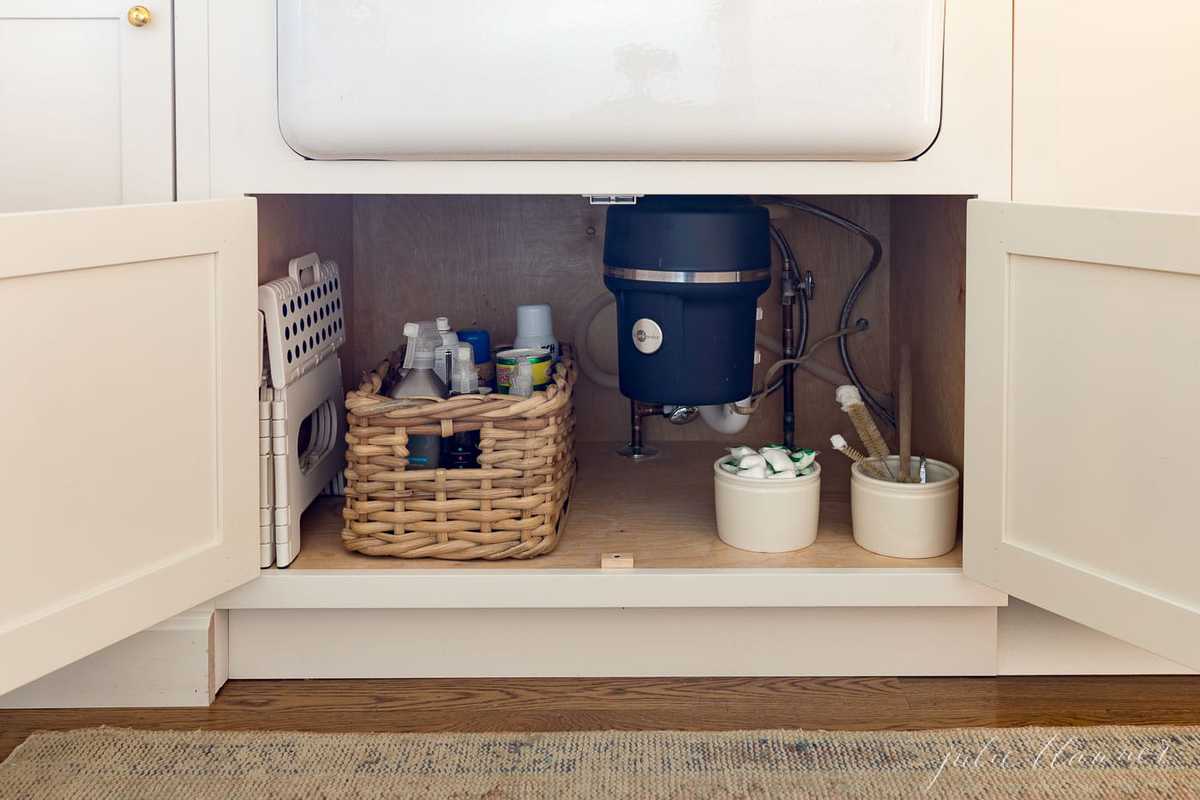
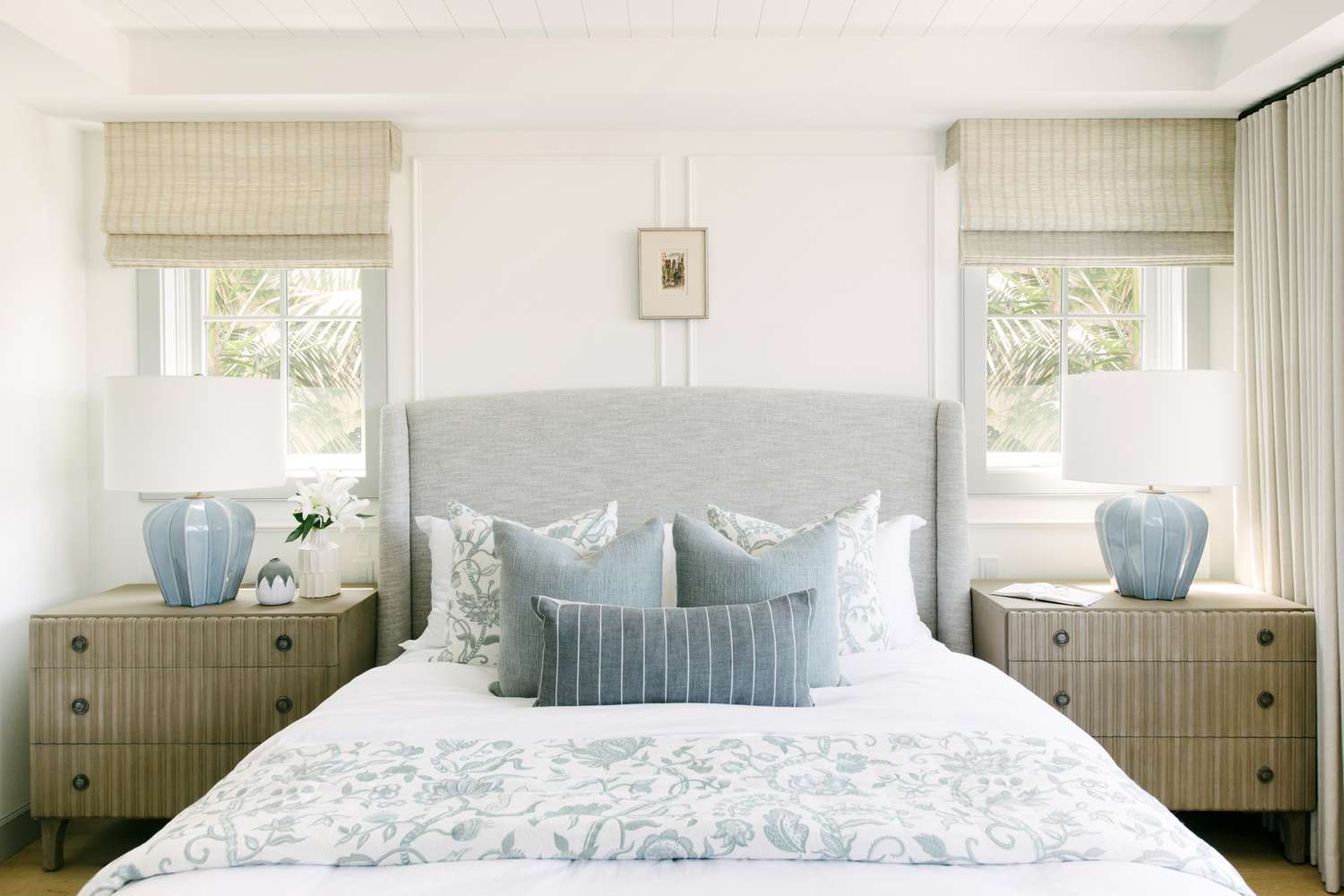
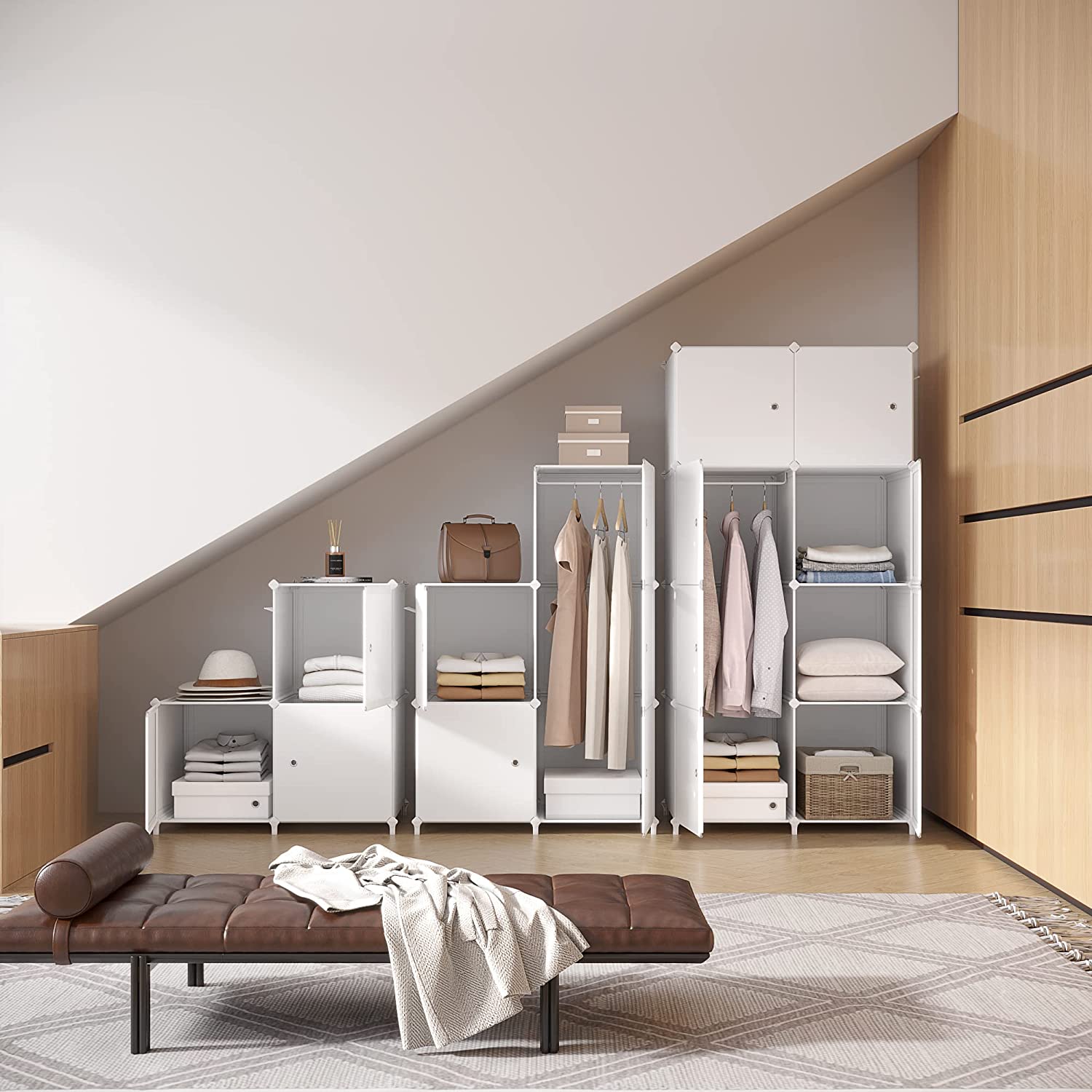
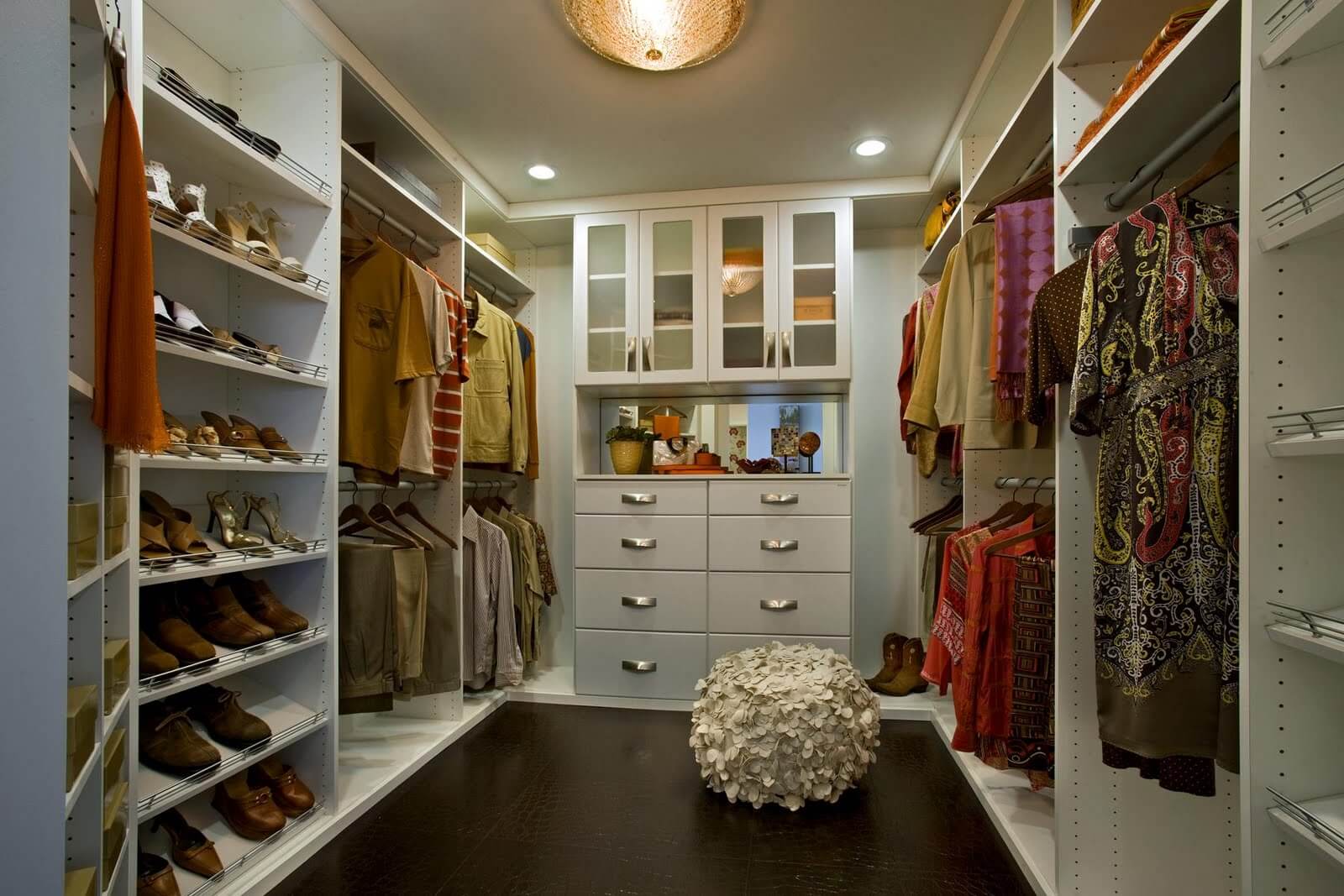

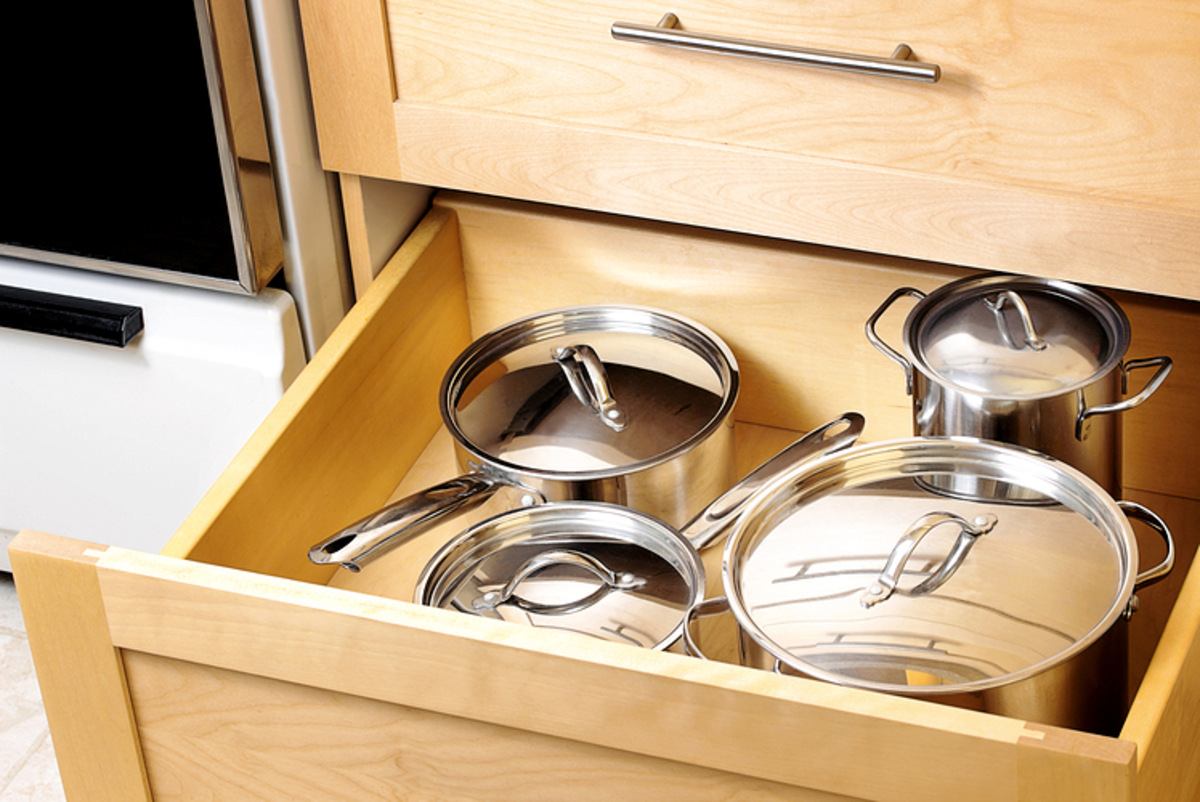
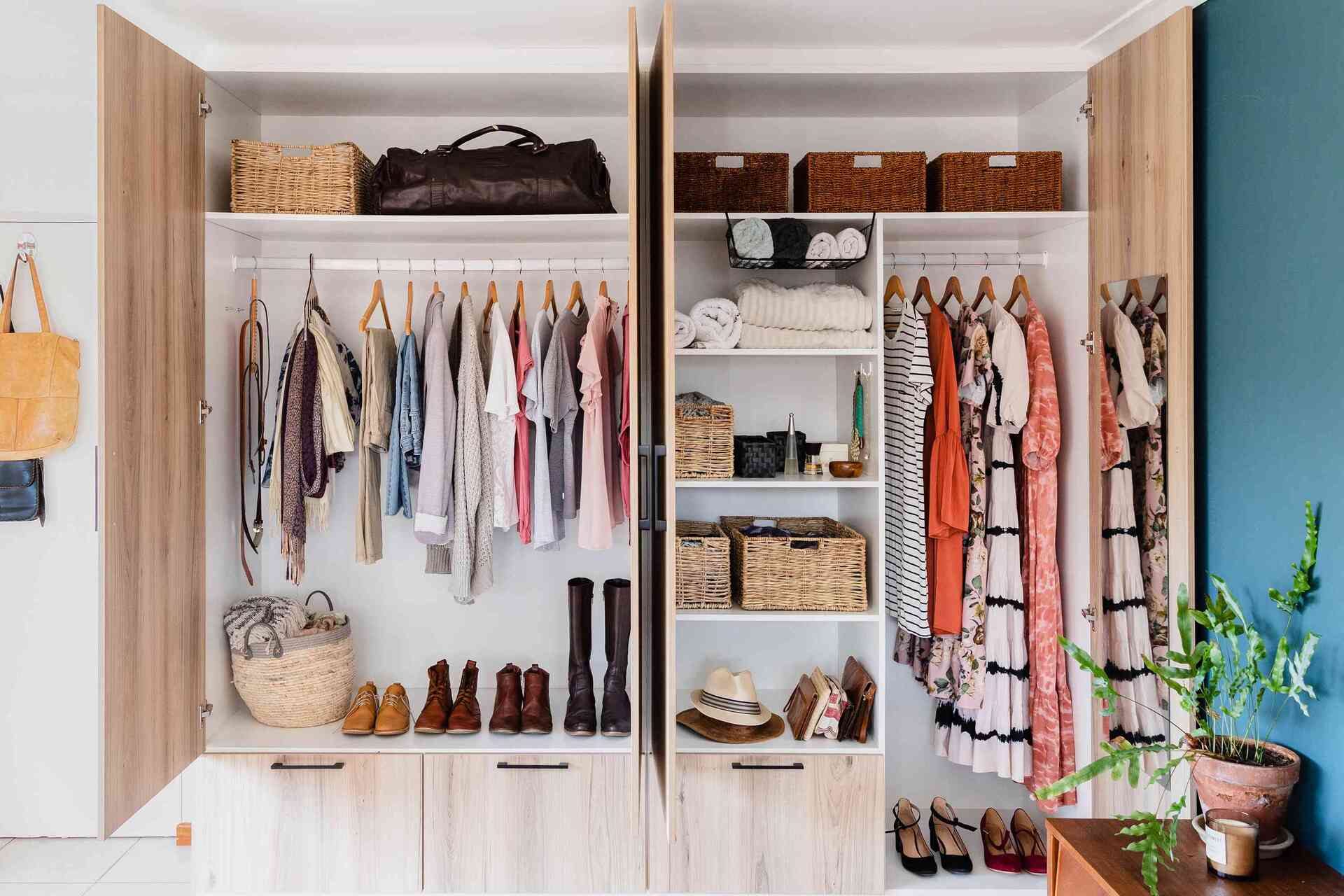
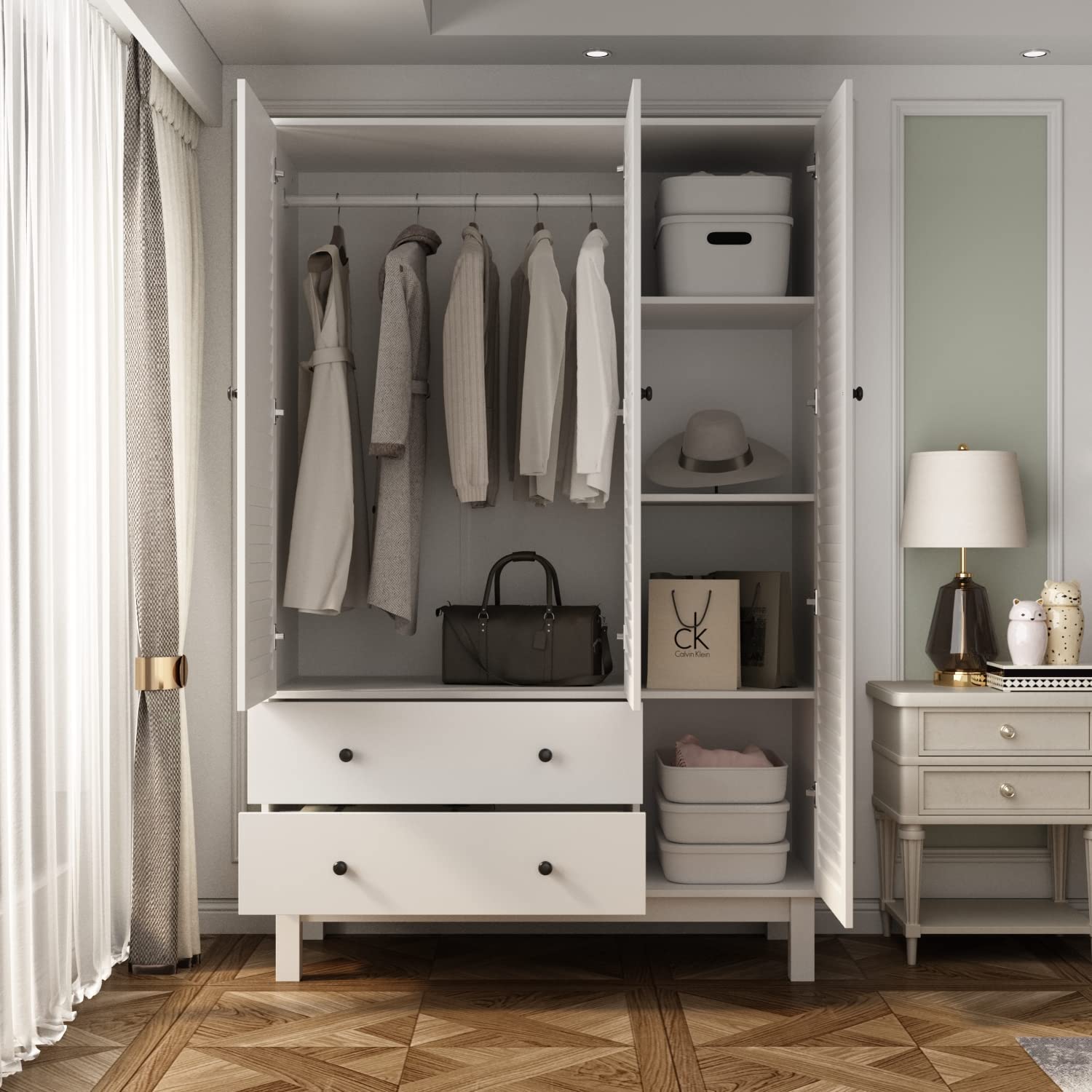
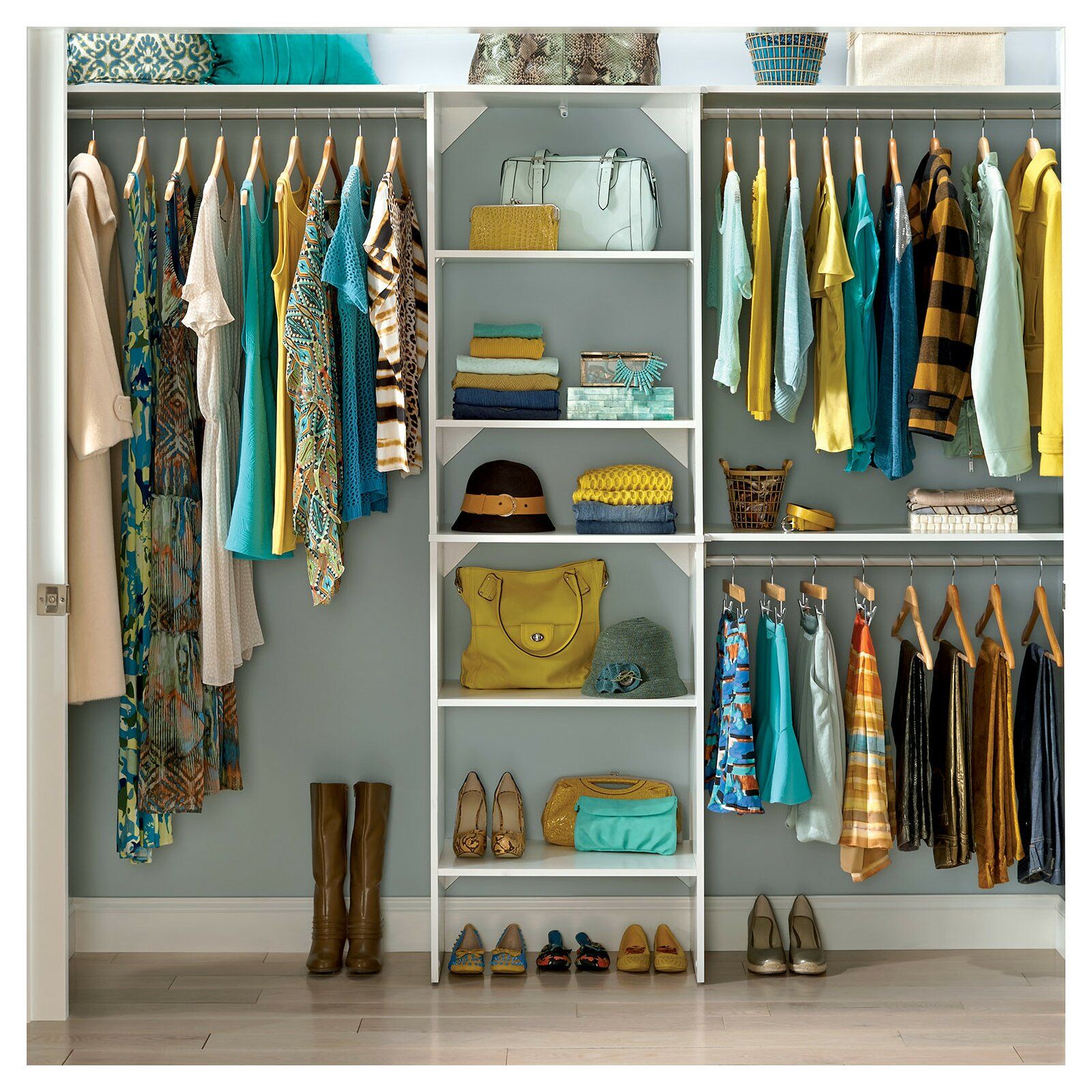
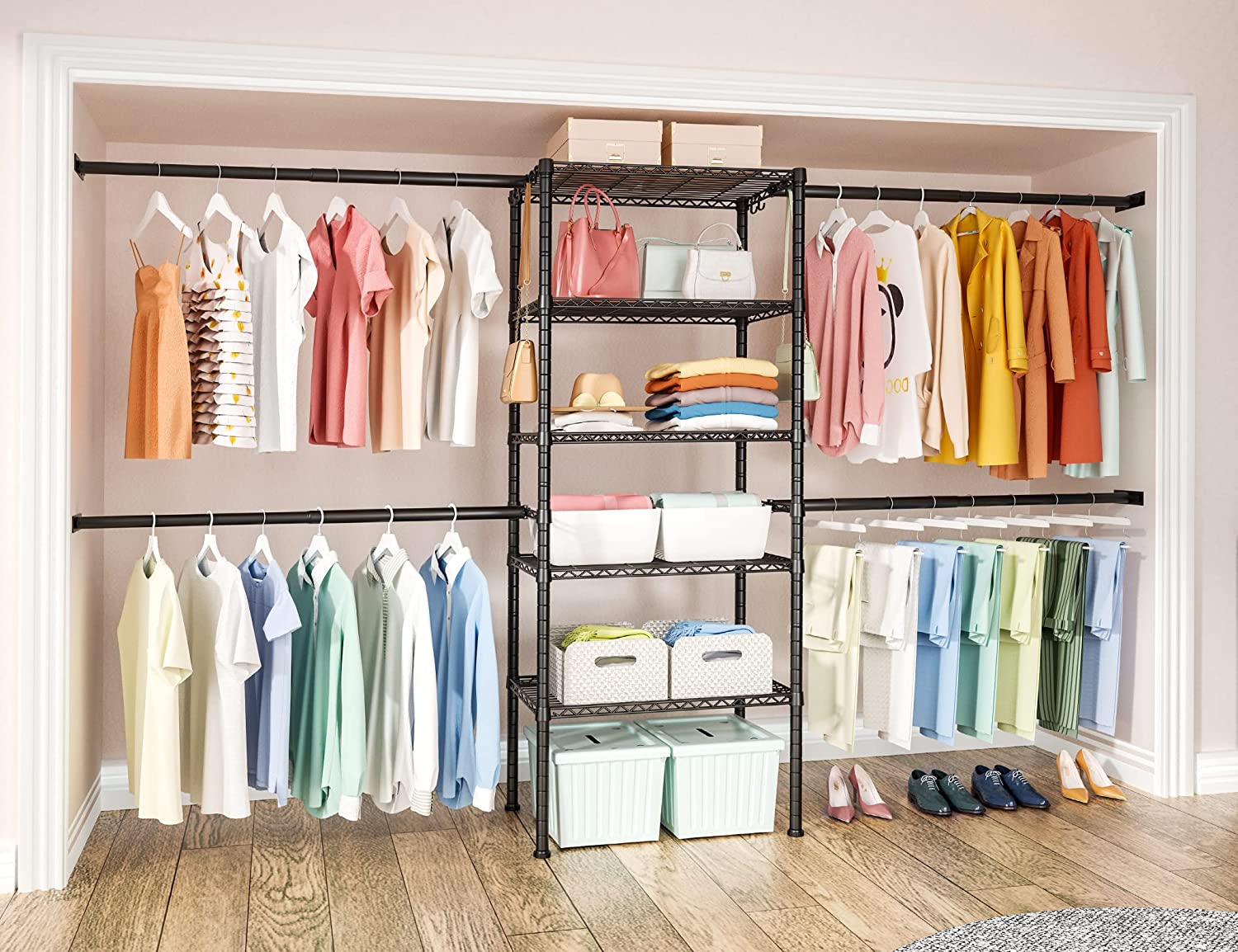

0 thoughts on “Closet Organization Ideas: 21 Tricks To Keep Clothes Neat”